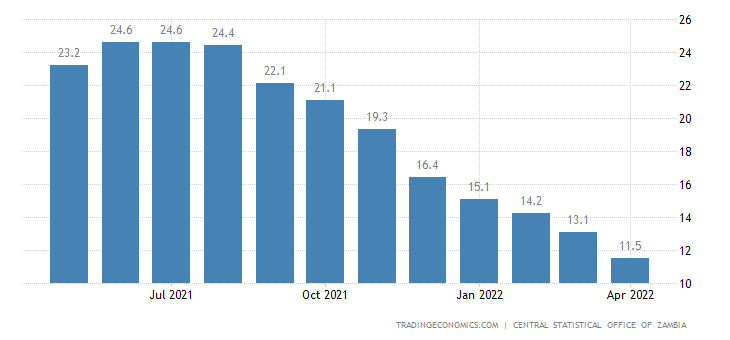By SOLWEZI TODAY REPORTER
THE annual rate of inflation has continued to decline while fuel prices climb, reaching 13.1 per cent in March, 2022 from 14.2 per cent recorded in February.
Announcing Zambia’s annual rate of inflation for the month of March, Zambia Statistics Agency (ZamStats) Interim Statistician-General Mulenga Musepa disclosed that inflation for the final month of the first quarter significantly dropped for a seventh successive month to on account of lower food inflation.
“The annual inflation rate for March, 2022 decreased to 13.1 per cent from 14.2 per cent recorded in February, 2022. This means that on average, prices of goods and services increased by 13.1 per cent between March, 2021 and March, 2022,” Musepa told journalists via Zoom Meetings in Lusaka recently.
The annual food inflation rate dropped to 15.3 per cent compared to 16.0 per cent recorded in February, 2022, a drop of 0.7 percentage points driven by declining prices of food items such as frozen fish, eggs and fresh milk.
Zambia’s non-food inflation on the other hand significantly reduced to 10.3 per cent in March, down from 11.8 per cent recorded in February, 2022, and further down from 17 per cent in March, 2021, mainly attributed to price movements of non-food items such as cement and charcoal.
ZamStats data shows that Zambia’s annual rate of inflation of 13.1 per cent recorded in the final month of the first quarter is the country’s lowest since January, 2020 when inflation was at 12.5 per cent.
Inflation has been progressively rising since then to peak at 24.6 per cent in July 2021, but the country’s inflation has continued dropping despite rising fuel prices.
Market experts largely attribute this development to the “base effects” which have continued to outweigh the recent upward adjustments in the fuel pump prices as well as upward pressure from heightened inflation through the import channel.
The base effect can be defined as the contribution to the change in the year-on-year inflation rate in a particular month stemming from a deviation of the month-on-month rate of change in the base month (the same month one year earlier) from the usual seasonal pattern.
The distortion in a monthly inflation figure that results from abnormally high or low levels of inflation in the year-ago month is an example of the “base effect.”








